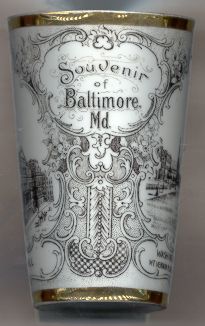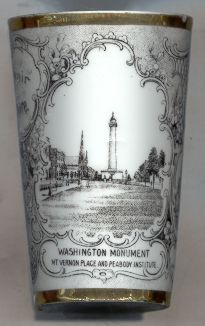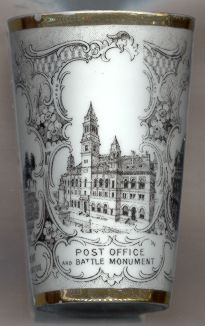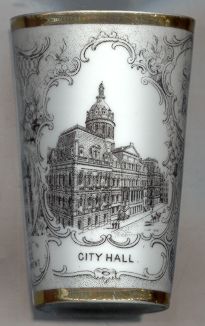

|
| UNITED STATES OF AMERICA | |
| MARYLAND | |
| Baltimore City County |

|
Baltimore is situated in the north central part of Maryland, on the Patapsco River, not far from the
Chesapeake Bay. Baltimore is an independent city with a population of about 630,000 (2005),
which makes it the largest city in Maryland.
The city is a major part of the Baltimore-Washington Metropolitan Area
and a major U.S. seaport.
During the 17th century, various towns called "Baltimore" were founded as commercial ports at various locations on the upper Chesapeake Bay. The present city dates from 1729 and is named after Cæcilius Calvert, 2nd Baron Baltimore who was the first Proprietary Governor of the Province of Maryland. Baltimore grew swiftly in the mid-late 18th century as the granary for sugar producing colonies in the Caribbean. During the War of 1812 Fort McHenry came under attack by British forces near the harbour. It was this event which inspired Francis Scott Key to write the poem, "The Star-Spangled Banner," the lyrics to the United States national anthem. Baltimore became an independent city in 1851, being detached from Baltimore County at that time. During the Civil War, Maryland was officially part of the Union but kept slavery legal. Many people in Baltimore at the time were sympathetic to the Confederacy. Pro-Southern sentiment led to the Baltimore riot of 1861 when Union soldiers marched through the city. After the riot, Union troops occupied Baltimore and Maryland came under direct federal administration—in part, to prevent the state from seceding—until the end of the war in April 1865. The Great Baltimore Fire on February 7, 1904 destroyed over 1,500 buildings in 30 hours. Baltimore's population peaked at 949,708 in the 1950 census, which ranked it as the sixth-largest city in the country, behind Detroit and ahead of Cleveland. For the next five decades, the city's population declined while its suburbs grew dramatically. In recent years, efforts to redevelop the downtown area have led to a revitalization of the Inner Harbor.
|
The
Further monuments to the 1st President of the United States depicted on items from this collection are
the Washington Monument in
The


|
The In 1930–1932 it was eventually replaced by a new, purely functional building of twice the size of the old structure. In 1972 the post office finally moved out of this new building which today is used by Baltimore city courts as their "Courthouse East".
The The Battle Monument, together with the Washington Monument prompted John Quincy Adams to name Baltimore "the Monumental City".
|
The

|
[Texts adapted from http://en.wikipedia.org/wiki/Baltimore,_Maryland, http://en.wikipedia.org/wiki/Peabody_Institute, http://www.mdhs.org/library/baltarch/Page15.htm, http://www.ce.jhu.edu/baltimorestructures/Battle%20Monument/battle_monument.htm, http://www.ce.jhu.edu/baltimorestructures/City%20Hall/city_hall.htm, http://www.ce.jhu.edu/mdcive/cityhall.htm, http://www.wam.umd.edu/~jlehnert/history.htm] | ||||||||
![[scale]](lineal.jpg)